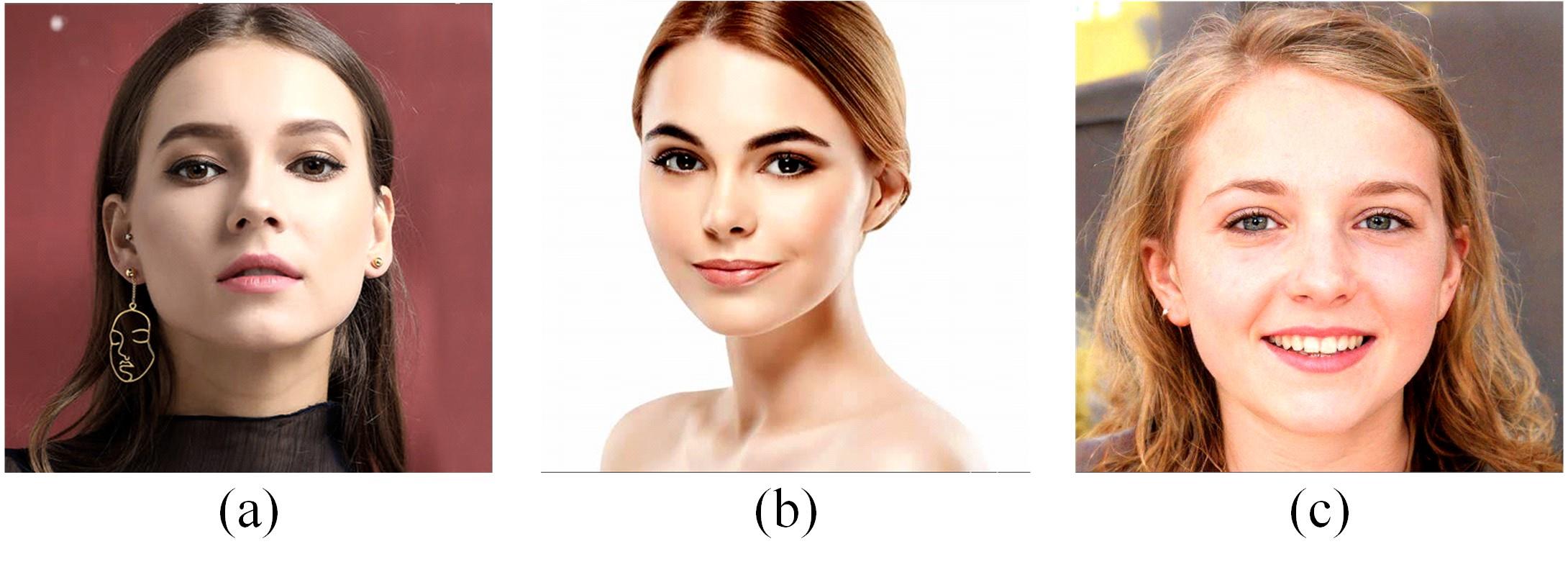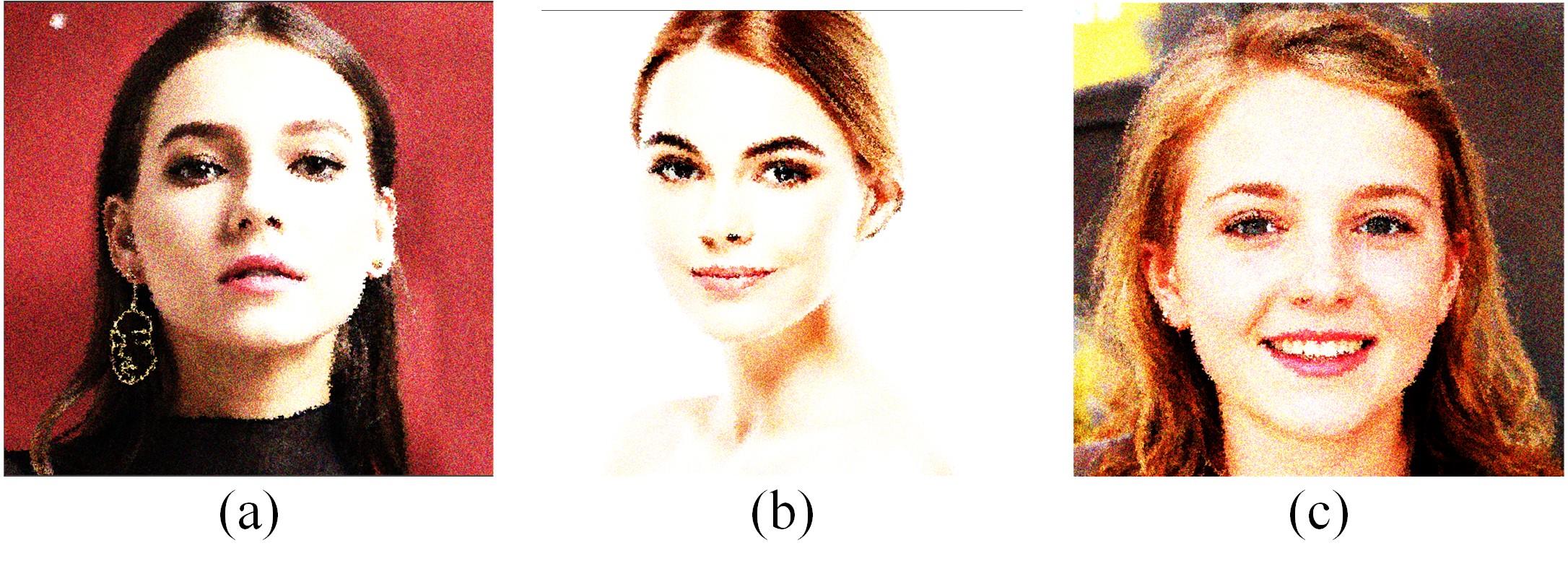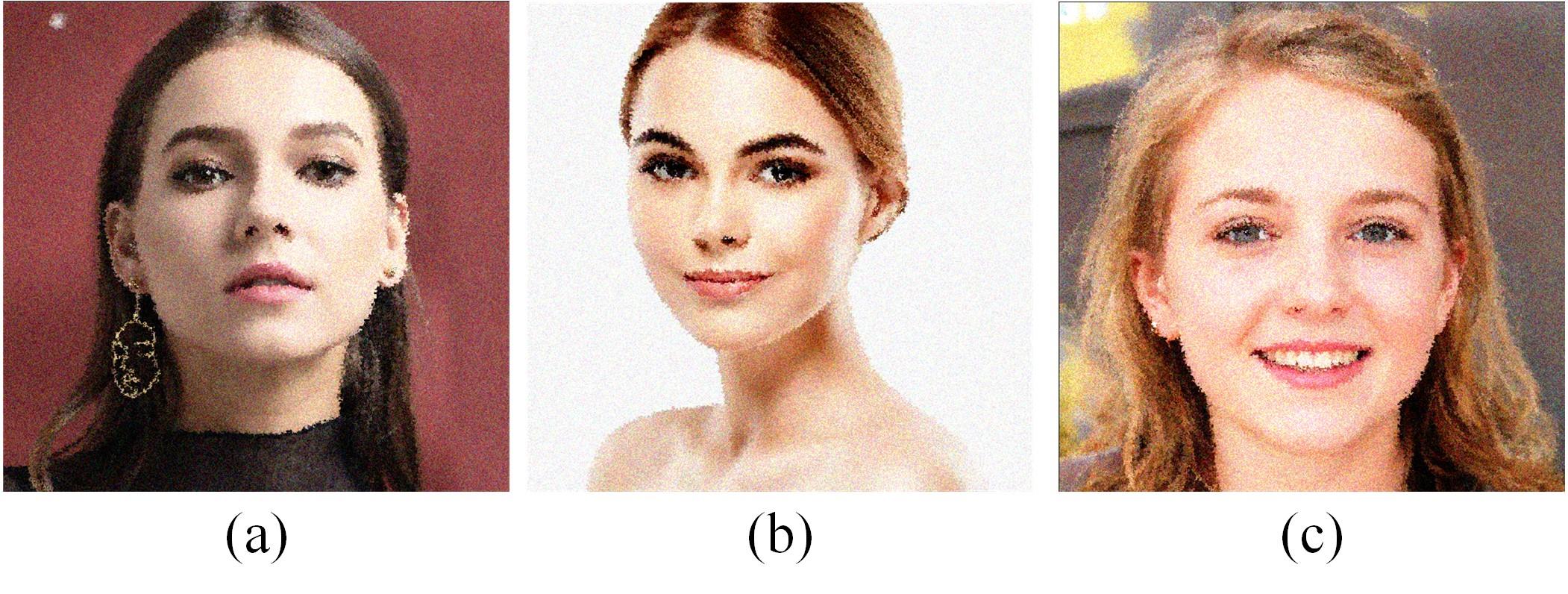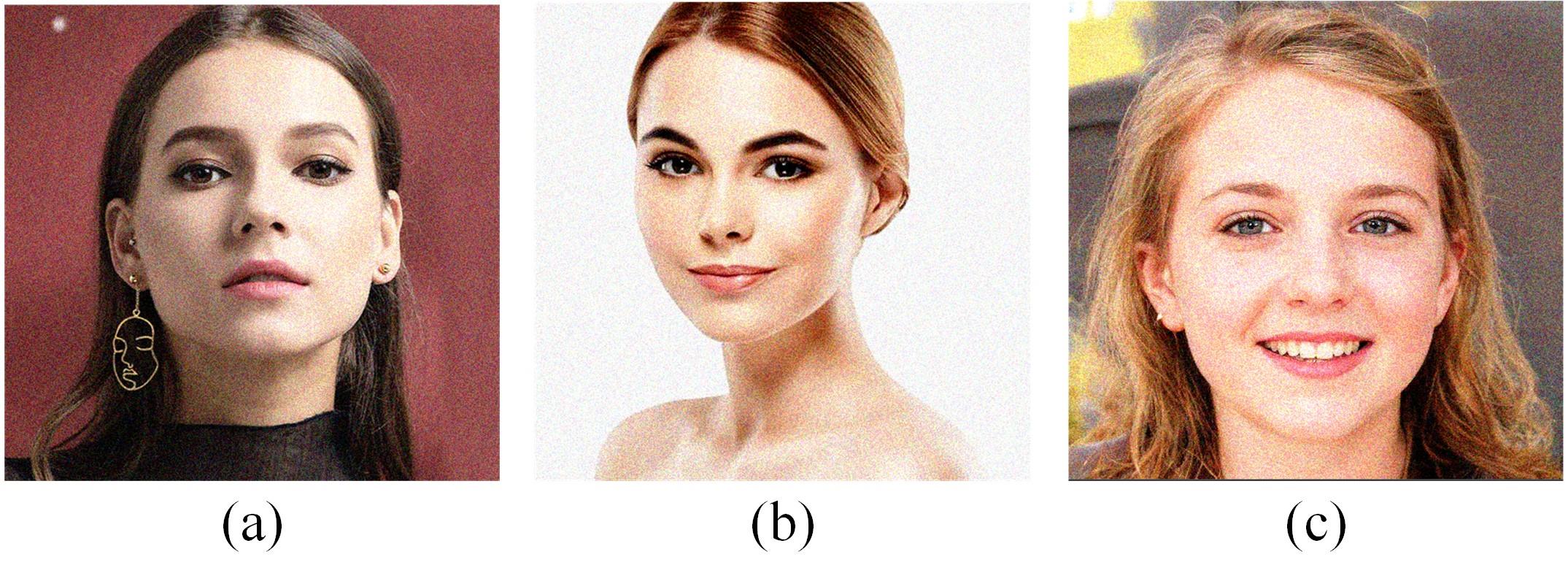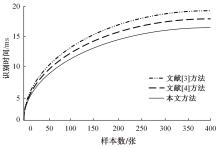Journal of Jilin University(Engineering and Technology Edition) ›› 2023, Vol. 53 ›› Issue (11): 3201-3206.doi: 10.13229/j.cnki.jdxbgxb.20220813
Previous Articles Next Articles
Adaptive blur and deduplication algorithm for digital media image based on wavelet domain
Xiao-qi LYU1,2,3( ),Hao LI1,2,Yu GU1,2
),Hao LI1,2,Yu GU1,2
- 1.College of Information Engineering,Inner Mongolia University of Science and Technology,Baotou 014010,China
2.Inner Mongolia Key Laboratory of Pattern Recognition and Intelligent Imag Processing,Inner Mongolia University of Science and Technology,Baotou 014010,China
3.Institute of Information Engineering,Inner Mongolia University of Technology,Hohhot 010051,China
CLC Number:
- TP391.41
| 1 | 杨恢先, 付宇, 曾金芳, 等. 基于正交Log-Gabor滤波二值模式的人脸识别算法[J]. 智能系统学报, 2019, 14(2): 330-337. |
| Yang Hui-xian, Fu Yu, Zeng Jin-fang, et al. Face recognition based on orthogonal Log-Gabor binary pattern[J]. CAAI Transactions on Intelligent Systems, 2019, 14(2): 330-337. | |
| 2 | 聂栋栋, 贺悦悦, 马勤勇. 基于PCA_LDA和协同表示分类的人脸识别算法[J]. 燕山大学学报, 2019, 43(2): 176-181. |
| Nie Dong-dong, He Yue-yue, Ma Qin-yong. Face recognition based on PCA_LDA and collaborative representation[J]. Journal of Yanshan University, 2019, 43(2): 176-181. | |
| 3 | 胡超, 李春国, 杨绿溪. 稀疏特征重用的人脸特征提取网络[J]. 信号处理, 2021, 37(7): 1153-1163. |
| Hu Chao, Li Chun-guo, Yang Lv-xi. Face feature extraction network based on sparse feature reuse[J]. Journal of Signal Processing, 2021, 37(7): 1153-1163. | |
| 4 | 栗科峰, 黄全振, 卢金燕. 基于热红外光谱的人脸特征提取算法[J]. 激光与光电子学进展, 2019, 56(2): 229-236. |
| Li Ke-feng, Huang Quan-zhen, Lu Jin-yan. Extraction algorithm of face features based on thermal infrared spectra[J]. Laser & Optoelectronics Progress, 2019, 56(2): 229-236. | |
| 5 | 孙文赟, 宋昱, 陈昌盛. 基于卷积-反卷积网络的正交人脸特征学习算法[J]. 深圳大学学报: 理工版, 2020, 37(5): 474-481. |
| Sun Wen-yun, Song Yu, Chen Chang-sheng. An orthogonal facial feature learning method based on convolutional-deconvolutional network[J]. Journal of Shenzhen University (Science & Engineering), 2020, 37(5): 474-481. | |
| 6 | 陈叶飞, 赵广社, 李国齐, 等. 无监督多重非局部融合的图像去噪方法[J]. 自动化学报, 2022, 48(1): 87-102. |
| Chen Ye-fei, Zhao Guang-she, Li Guo-qi, et al. Unsupervised multi-non-local fusion image denoising method[J]. Acta Automatica Sinica, 2022, 48(1): 87-102. | |
| 7 | 石翠萍, 韩崇彬, 邓强强, 等. 基于图形小波变换的遥感图像表示与去噪[J]. 电讯技术, 2020, 60(1): 76-80. |
| Shi Cui-ping, Han Chong-bin, Deng Qiang-qiang, et al. Representation and denoising of remote sensing image based on graph wavelet transform[J]. Telecommunication Engineering, 2020, 60(1): 76-80. | |
| 8 | 周航, 苏延池, 李占山, 等. 基于子空间表示和加权低秩张量正则化的高光谱图像混合噪声去除方法[J]. 吉林大学学报: 理学版, 2023, 61(1): 118-126. |
| Zhou Hang, Su Yanchi, Li Zhan-shan, et al. Mixed noise removal method for hyperspectral images based on subspace representation and weighted low-rank tensor regularization[J]. Journal of Jilin University (Science Edition), 2023, 61(1): 118-126. | |
| 9 | 成丽波, 陈鹏宇, 李喆, 等. 基于剪切波变换和拟合优度检验的遥感图像去噪[J]. 吉林大学学报: 理学版, 2023, 61(5): 1187-1194. |
| Cheng Libo, Chen Pengyu, Li Zhe,et al. Remote sensing image denoising based on shearlet transform and goodness of fit test[J]. Journal of Jilin University (Science Edition), 2023, 61(5): 1187-1194. | |
| 10 | 徐华平, 贾小宁. 基于仿射不变块相似度量的BM3D图像去噪算法[J]. 吉林大学学报: 理学版, 2022, 60(1): 109-0118. |
| Xu Hua-ping, Jia Xiao-ning. Image denoising algorithm based on affine invariant patch similarity measure[J]. Journal of Jilin University (Science Edition), 2022, 60(1): 109-0118. | |
| 11 | 徐少平, 刘婷云, 林珍玉, 等. 用于去除随机脉冲噪声的两阶段盲卷积降噪模型[J]. 计算机学报, 2020, 43(9): 1673-1690. |
| Xu Shao-ping, Liu Ting-yun, Lin Zhen-yu, et al. Learning a two-stage blind convolutional denoising model for the removal of random-valued impulse noise[J]. Chinese Journal of Computers, 2020, 43(9): 1673-1690. | |
| 12 | 王晓红, 刘芳, 麻祥才. 基于深度残差学习的彩色图像去噪研究[J]. 包装工程, 2019, 40(17): 235-242. |
| Wang Xiao-hong, Liu Fang, Ma Xiang-cai. Color image denoising based on depth residual learning[J]. Packaging Engineering, 2019, 40(17): 235-242. | |
| 13 | 丁罗依, 段锦, 宋宇, 等. 基于残差学习和视觉显著性映射的图像融合[J]. 激光与光电子学进展, 2020, 57(16): 116-123. |
| Ding Luo-yi, Duan Jin, Song Yu, et al. Image fusion based on residual learning and visual saliency mapping[J]. Laser & Optoelectronics Progress, 2020, 57(16): 116-123. | |
| 14 | 李军军, 曹建农, 朱莹莹, 等. 高分辨率遥感影像建筑区域局部几何特征提取[J]. 遥感学报, 2020, 24(3): 233-244. |
| Li Jun-jun, Cao Jian-nong, Zhu Ying-ying, et al. Built-up area detection from high resolution remote sensing images using geometric features[J]. Journal of Remote Sensing, 2020, 24(3): 233-244. | |
| 15 | 汤松梅. 基于群智能的图书馆人脸识别系统关键技术[J]. 吉林大学学报: 工学版, 2021, 51(6): 2216-2224. |
| Tang Song-mei. Key technology of face recognition system based on swarm intelligence in library[J]. Journal of Jilin University (Engineering and Technology Edition), 2021, 51(6): 2216-2224. | |
| 16 | 熊李艳, 朱宁. 基于局部结构保留的级联子空间深度聚类[J]. 计算机应用研究, 2020, 37(8): 2358-2361. |
| Xiong Li-yan, Zhu Ning. Cascade subspace clustering based on local structure preservation[J]. Application Research of Computers, 2020, 37(8): 2358-2361. | |
| 17 | 王小玉, 胡鑫豪, 韩昌林. 基于生成对抗网络的人脸铅笔画算法[J]. 吉林大学学报: 工学版, 2021, 51(1): 285-292. |
| Wang Xiao-yu, Hu Xin-hao, Han Chang-lin. Face pencil drawing algorithms based on generative adversarial network[J]. Journal of Jilin University (Engineering and Technology Edition), 2021, 51(1): 285-292. | |
| 18 | 方明, 陈文强. 结合残差网络及目标掩膜的人脸微表情识别[J]. 吉林大学学报: 工学版, 2021, 51(1): 303-313. |
| Fang Ming, Chen Wen-qiang. Joint AIHS and particle swarm optimization for pan-sharpening[J]. Journal of Jilin University (Engineering and Technology Edition), 2021, 51(1): 303-313. |
| [1] | Guang HUO,Da-wei LIN,Yuan-ning LIU,Xiao-dong ZHU,Meng YUAN,Di GAI. Lightweight iris segmentation model based on multiscale feature and attention mechanism [J]. Journal of Jilin University(Engineering and Technology Edition), 2023, 53(9): 2591-2600. |
| [2] | Xiao-jun JIN,Yan-xia SUN,Jia-lin YU,Yong CHEN. Weed recognition in vegetable at seedling stage based on deep learning and image processing [J]. Journal of Jilin University(Engineering and Technology Edition), 2023, 53(8): 2421-2429. |
| [3] | Qing-tian GENG,Zhi LIU,Qing-liang LI,Fan-hua YU,Xiao-ning LI. Prediction of soil moisture based on a deep learning model [J]. Journal of Jilin University(Engineering and Technology Edition), 2023, 53(8): 2430-2436. |
| [4] | Yuan-han WENG,Nan LI. Text data compression and storage algorithm based on time series model [J]. Journal of Jilin University(Engineering and Technology Edition), 2023, 53(7): 2109-2114. |
| [5] | Wei-tiao WU,Kun ZENG,Wei ZHOU,Peng LI,Wen-zhou JIN. Deep learning method for bus passenger flow prediction based on multi-source data and surrogate-based optimization [J]. Journal of Jilin University(Engineering and Technology Edition), 2023, 53(7): 2001-2015. |
| [6] | Zhen-hai ZHANG,Kun JI,Jian-wu DANG. Crack identification method for bridge based on BCEM model [J]. Journal of Jilin University(Engineering and Technology Edition), 2023, 53(5): 1418-1426. |
| [7] | Fei WU,Hao-ye NONG,Chen-hao MA. Tool wear prediction method based on particle swarm optimizationlong and short time memory model [J]. Journal of Jilin University(Engineering and Technology Edition), 2023, 53(4): 989-997. |
| [8] | Wen-li JI,Zhong TIAN,Jing CHAI,Ding-ding ZHANG,Bin WANG. Prediction of water⁃flowing height in fractured zone based on distributed optical fiber and multi⁃attribute fusion [J]. Journal of Jilin University(Engineering and Technology Edition), 2023, 53(4): 1200-1210. |
| [9] | Ke HE,Hai-tao DING,Xuan-qi LAI,Nan XU,Kong-hui GUO. Wheel odometry error prediction model based on transformer [J]. Journal of Jilin University(Engineering and Technology Edition), 2023, 53(3): 653-662. |
| [10] | Jun WANG,Hua-lin WANG,Bo-wen HUANG,Qiang FU,Jun LIU. Intrusion detection for industrial internet of things based on federated learning and self-attention [J]. Journal of Jilin University(Engineering and Technology Edition), 2023, 53(11): 3229-3237. |
| [11] | Rui-shan DU,Yu-xin CHEN,Ling-dong MENG. Trusted cloud computing platform poly source big data time sequence scheduling algorithm [J]. Journal of Jilin University(Engineering and Technology Edition), 2023, 53(11): 3194-3200. |
| [12] | Li-bo CHENG,Xin-yue LI,Zhe LI,Xiao-ning JIA. Remote sensing image denoising method based on curvelet transform and goodness-of-fit test [J]. Journal of Jilin University(Engineering and Technology Edition), 2023, 53(11): 3207-3213. |
| [13] | Shu-yang SUN,Wei-bin CHENG,Hao-zhen ZHANG,Xiang-ping DENG,Hong QI. Deep-learning-based two-stage approach for real-time explicit topology optimization [J]. Journal of Jilin University(Engineering and Technology Edition), 2023, 53(10): 2942-2951. |
| [14] | You QU,Wen-hui LI. Multiple object tracking method based on multi-task joint learning [J]. Journal of Jilin University(Engineering and Technology Edition), 2023, 53(10): 2932-2941. |
| [15] | Jin-wu GAO,Zhi-huan JIA,Xiang-yang WANG,Hao XING. Degradation trend prediction of proton exchange membrane fuel cell based on PSO⁃LSTM [J]. Journal of Jilin University(Engineering and Technology Edition), 2022, 52(9): 2192-2202. |
|

